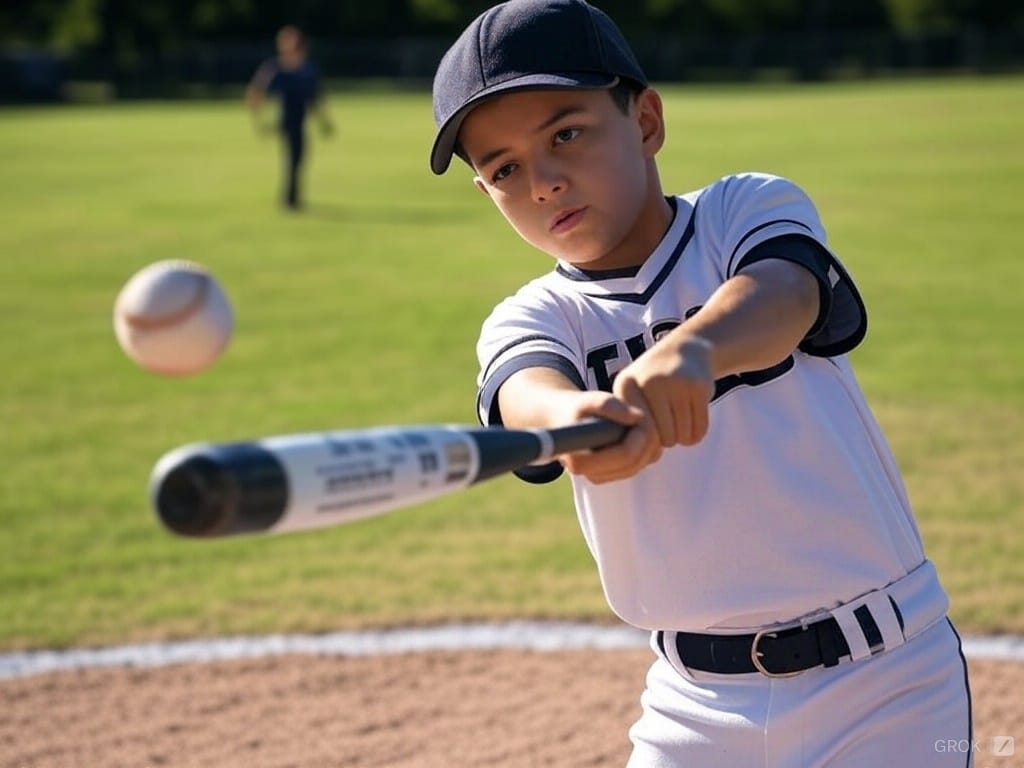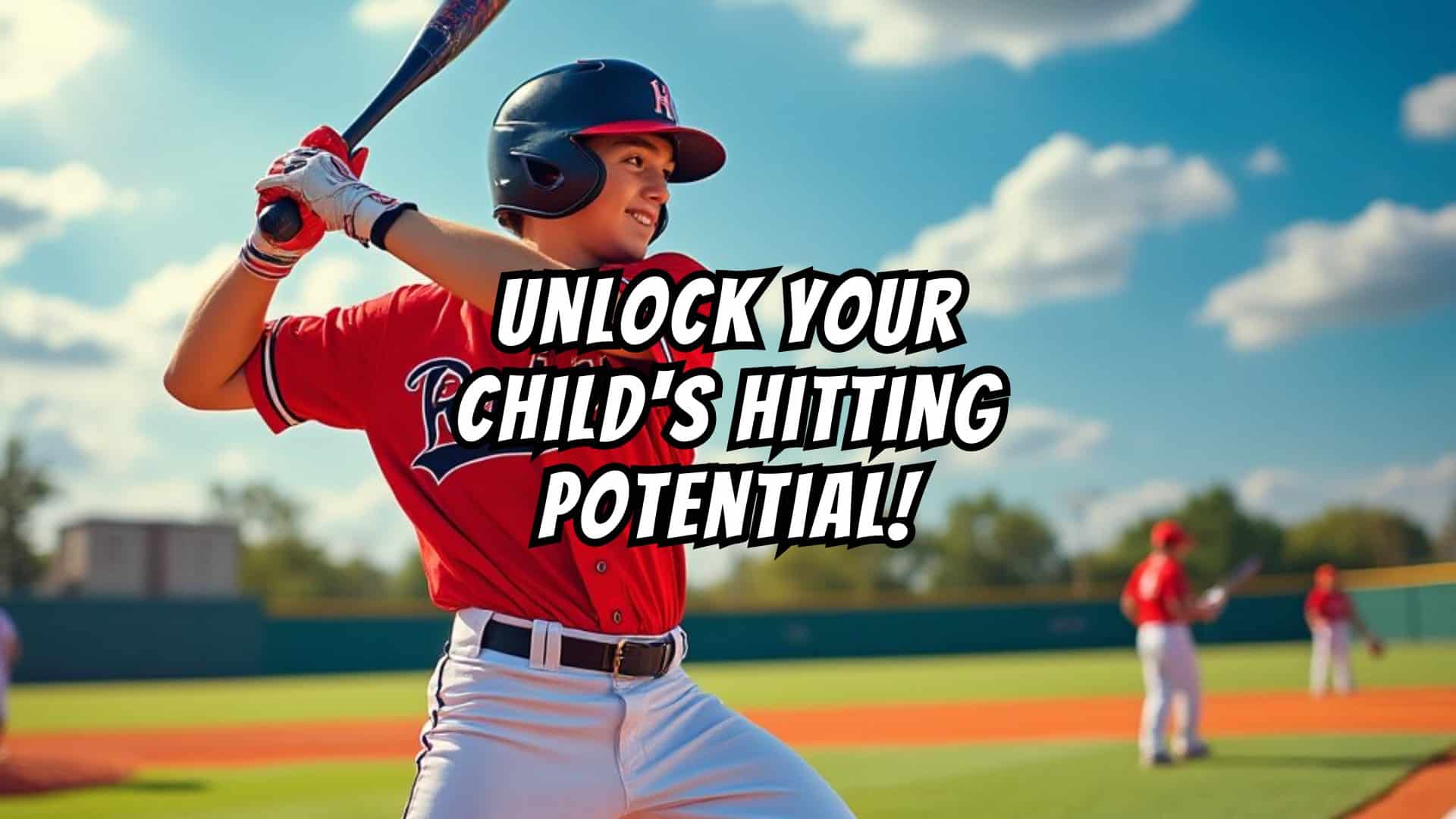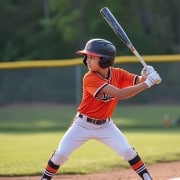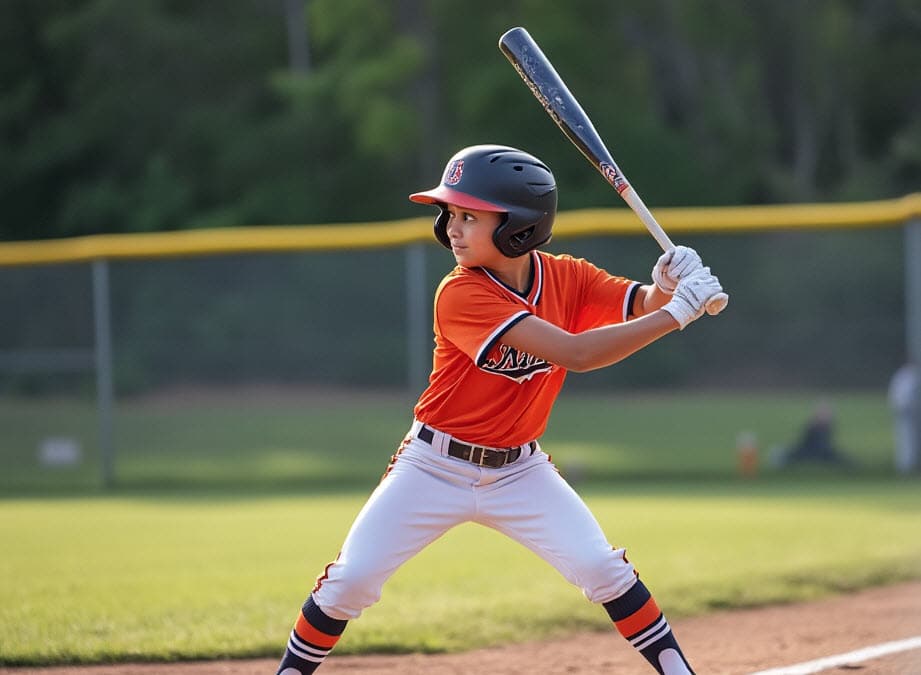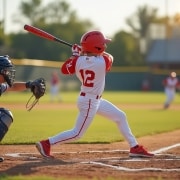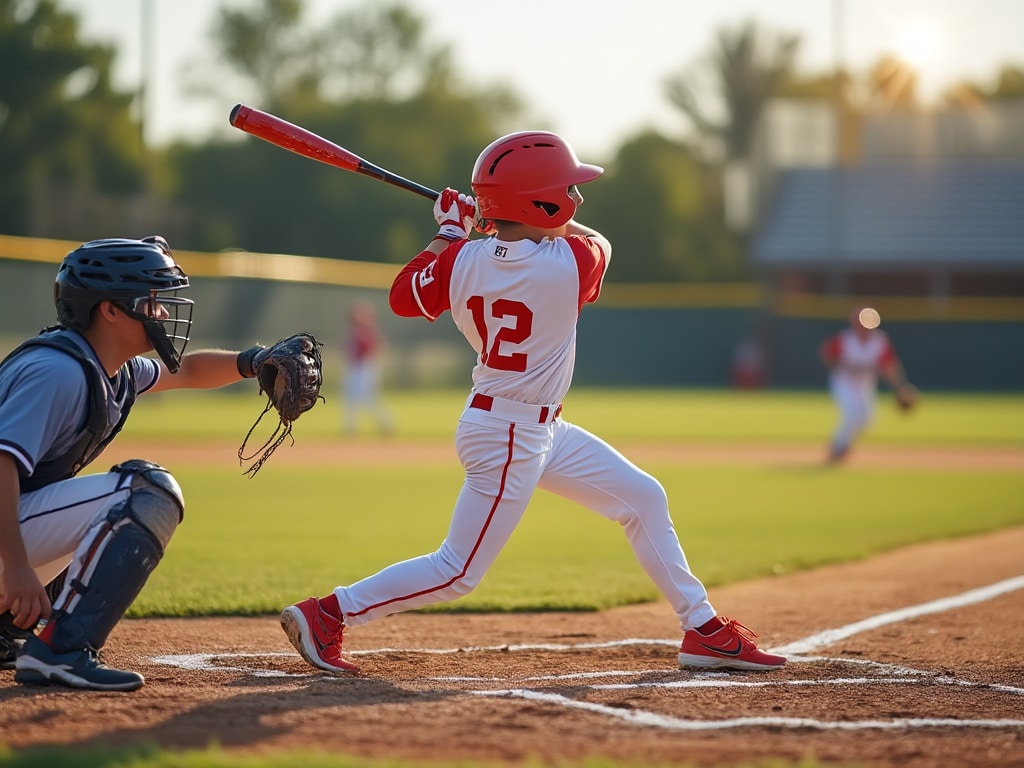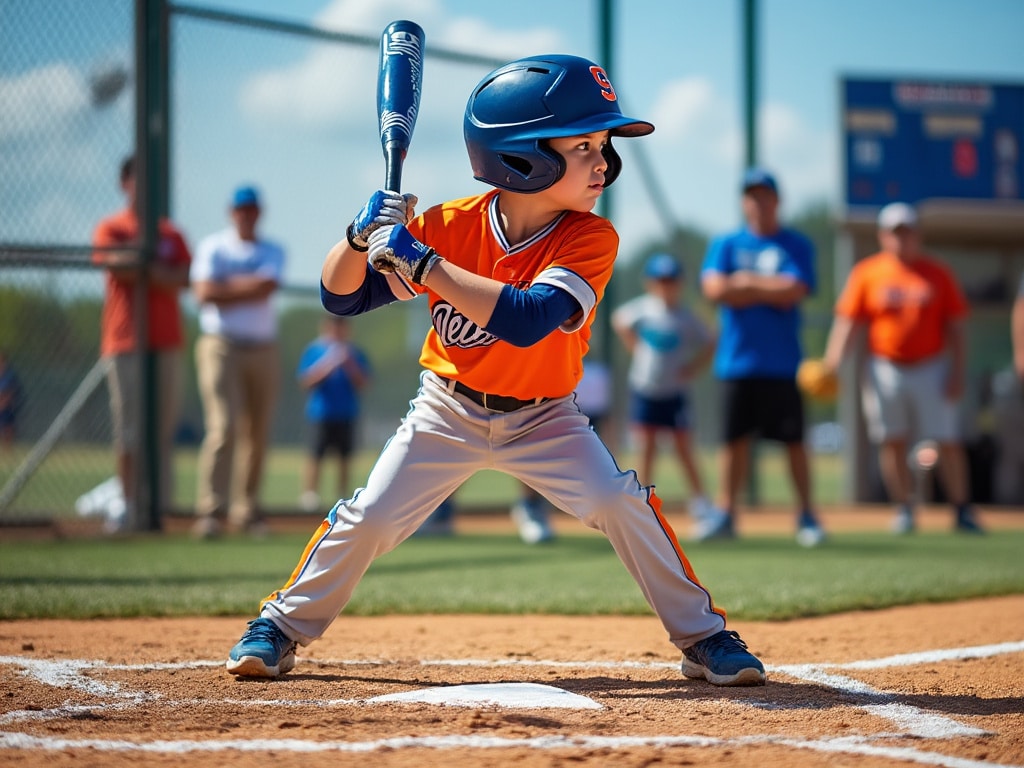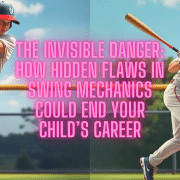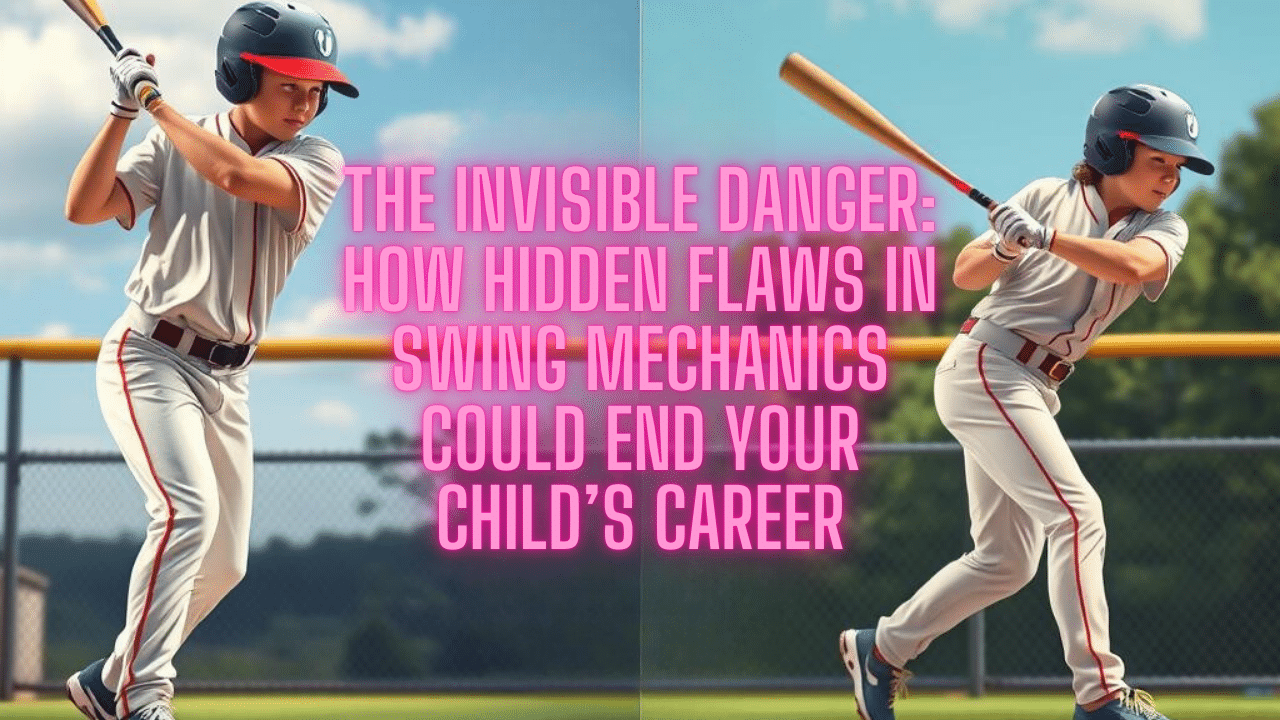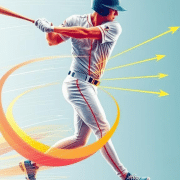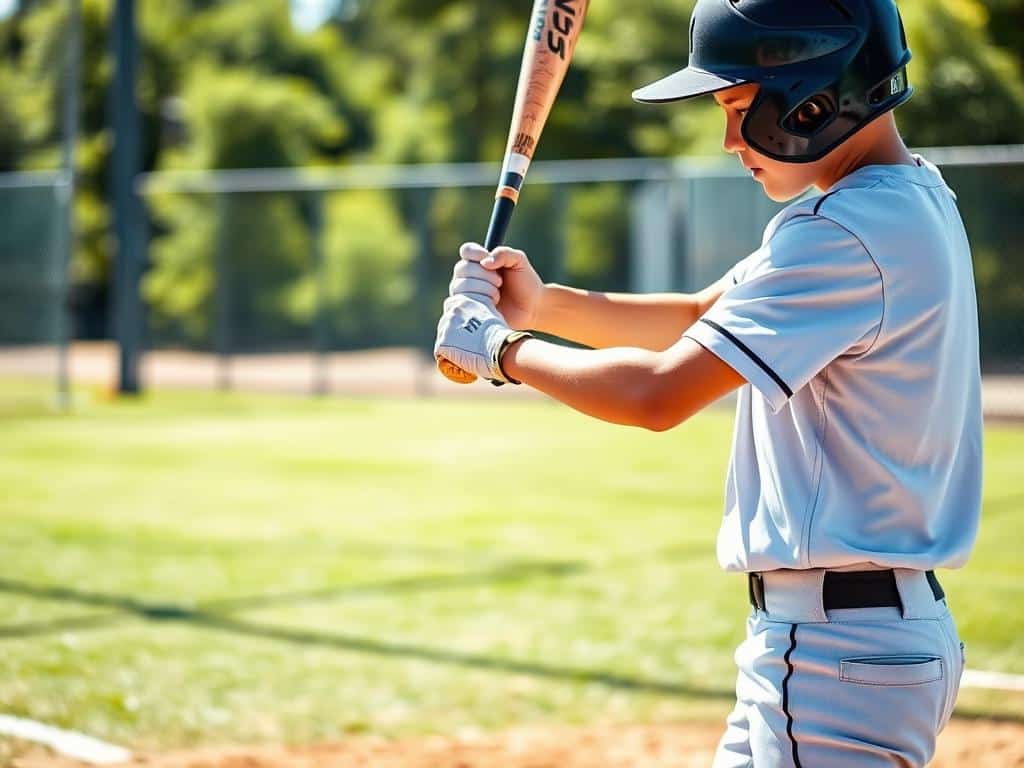
Why Over-Rotation is Killing Your Child’s Swing – And How to Fix It in 10 Minutes a Day
Did you know fixing bat drag can boost your batting average? Harris-Stowe State University’s team saw their batting average jump from .311 to .334 between 2016 and 2017. This shows how hitting techniques can make a big difference. At Hitting Performance Lab, we’re excited to share a science-backed way to fix bat drag and enhance your hitting. Get ready to improve your swing and outperform your competition!
We’ll teach you how to fix bat drag and enhance your swing with anti-rotation band drills. Our aim is to help you improve your batting performance quickly. With the right training and tools, you can see a big improvement in your game.
Key Takeaways
- Fixing bat drag can significantly improve your batting average and overall hitting performance.
- Anti-rotation band drills are an effective way to correct baseball swing flaws, like bat drag, and improve hitting technique.
- Proper equipment, such as Jaeger resistance bands, is essential for effective training and improving your swing.
- Consistent practice and repetition are crucial for mastering anti-rotation drills and achieving optimal results.
- Our science-backed approach will help you improve your hitting technique and take your game to the next level.
Understanding Bat Drag and Its Impact on Your Swing
At Hitting Performance Lab, we’ve seen many talented hitters struggle with bat drag. It’s when your hands and bat lag behind your body rotation. This affects your batting mechanics and timing. It’s crucial to understand and address it to improve your power and timing.
To eliminate bat drag, you need to identify its causes and effects. Bat drag can be identified by a racing back elbow and weak contact, leading to frustrating pop-ups. It’s often caused by poor sequencing or weak core engagement. As you work to fix bat path and improve your batting mechanics improvement, understanding the enemy is the first step to defeating it.
What Causes Bat Drag in Baseball
Bat drag is a common swing flaw affecting youth baseball and fast pitch softball hitters. It starts in Little League to about middle school when pitchers increase their throwing speed. Upwards of 80% of young hitters may have some degree of bat drag in their swings.
This leads to increasing swinging strikeouts, hitting the ball into the ground, and adopting an excessive uppercut.
How Bat Drag Affects Your Hitting Performance
Bat drag causes the swing to take too long to unfold. This results in a lower Exit Velocity and because the barrel isn’t in the zone that long, it also leads to more strikeouts. Hitters with bat drag often go from being the best on the team to struggling at the plate within a season or two.
To overcome this, it’s crucial to focus on batting mechanics improvement and work on fixing bat path issues.
Common Signs You’re Dealing with Bat Drag
Some common signs of bat drag include a racing back elbow, weak contact, and frustrating pop-ups. Hitters with bat drag tend to hit to the opposite field or foul territory quite often. The dead giveaway is over-rotation of the upper body. By recognizing these signs and working to eliminate bat drag, you can improve your overall hitting performance and become a more consistent and effective hitter.
The Science Behind Anti-Rotation Training for Baseball
At Hitting Performance Lab, we dive deep into baseball science! Our team works hard to give you top hitting coach tips to boost your game. Anti-rotation training is key because most hitters are taught too much rotation, so focusing on core strength and the right swing sequence is the right path. By doing baseball hitting drills that strengthen your core, you’ll build a strong base for powerful swings.
Let’s look at some stats:
- Yearly batting averages (AVG) went up from 2014 to 2017: .298, .263, .311, .334.
- Slugging percentages (SLG) also rose over the same years: .412, .357, .449, .472.
By using anti-rotation training and baseball hitting drills, you can increase batting average and slugging percentage, so you can reach your full hitting potential.
Our studies found that over 30,000 hitters added 40 feet to their hits with one strategy. An 11u player named Jace hit his first home run at 180 feet. A 13u player, a professional golfer’s daughter, hit .800 with these tips. These stories prove the impact of anti-rotation training and hitting coach tips on your game.
Essential Equipment for Bat Drag Correction Drills
At Hitting Performance Lab, we understand the importance of the right tools for training. For our anti-rotation drills, resistance bands are key. You need bands with the right tension to challenge your muscles without hurting your form. We’ll help you pick the perfect resistance for your swing, which is vital for a hitting mechanics adjustment.
To start with baseball hitting drills, you’ll need a few basic tools. Here are the essentials to add to your setup:
- Resistance bands with varying levels of tension (Jaeger bands are our favorites),
- A sturdy anchor point for the bands (e.g. chain link fence), and
- A bat and a comfortable training space.
With these tools and our expert advice, you can turn any space into a place to battle bat drag. Remember, the secret to successful baseball hitting drills is proper form and technique. And don’t forget to make hitting mechanics adjustment as needed.
By choosing the right equipment and following our advice, you’ll be on your way to fixing bat drag and boosting your hitting skills. So, why wait? Start today and elevate your swing with our expert-approved baseball hitting drills!
How to Fix Bat Drag Using Progressive Band Exercises
At Hitting Performance Lab, we’re excited to share our expertise on fixing bat drag with progressive band exercises! As a hitting coach, I’ve seen how proper technique boosts a player’s performance. To improve your hitting, start with a solid stance and grip. This foundational work will help you fix bat drag and enhance your swing. WATCH VIDEO BELOW…
Our method includes exercises to enhance your hitting technique and fix bat drag. We start with foundational stance and grip technique, ensuring you’re ready for success. Then, we move to basic anti-rotation movements to build strength and control in your swing. Lastly, we progress to advanced band drill progressions for a more dynamic challenge.
By following these exercises and tips, you’ll be on your way to fixing bat drag and improving your hitting. Stay focused, work hard, and trust the process. With dedication and practice, you’ll hit like a pro soon!
Here are some key takeaways to keep in mind as you work on fixing bat drag and improving your hitting technique:
- Start with a solid stance and grip to establish a strong foundation
- Focus on developing anti-rotation strength and control
- Progress to more advanced exercises and drills to challenge yourself and improve your technique
Mastering Your Swing Mechanics Through Band Training
At Hitting Performance Lab, we’ve seen players greatly improve their swing mechanics and power. By fixing the correct baseball swing flaw, you can reach your full potential. Our band training helps you develop explosive hip rotation, fast hands, and a strong core.
Our training program teaches you to fix common swing issues like bat drag and rear racing elbow. You’ll also learn to make solid contact feel natural. Our methods are science-backed and show results in just 1-2 weeks. Whether you’re new or experienced, our band training can elevate your game.
Some of the benefits of our program include:
- Improved swing mechanics and power generation
- Increased bat speed and exit velocity
- Enhanced muscle memory and consistency
- Reduced risk of injury and improved overall performance
Don’t just take our word for it – our program works for all ages and skill levels. From high school athletes to pros, our band training can help you reach your goals. So why wait? Start mastering your swing mechanics today and unlock your full potential!
Common Mistakes to Avoid During Anti-Rotation Drills
Starting your journey to fix bat path issues? Be aware of common mistakes that can slow you down. At Hitting Performance Lab, we’ve seen many hitters struggle with poor form and technique. This can make bad habits worse and even cause injuries.
To steer clear of these issues, focus on the right form and technique. Also, make sure the band is placed correctly and at the right tension.
Watch out for inconsistent training frequency, which can cause overtraining or undertraining. Also, avoid poor band placement to prevent muscle and joint strain. Being aware of these mistakes can make your anti-rotation drills effective and safe.
Here are some tips to help you avoid common mistakes:
- Start with proper form and technique, and gradually increase the intensity and difficulty of your drills.
- Use correct band placement and tension to avoid putting unnecessary strain on your muscles and joints.
- Listen to your body and avoid overtraining, which can lead to injury or burnout.
This is a video in the Swing Shift series…
Boost your hitting skills with Swing Shift’s science-backed practice system! This program is packed with features to improve hand path stability, timing, and power. Enjoy engaging drills for consistent progress and fun challenges to keep training exciting. Swing Shift is designed to help players succeed at every level.
The Swing Shift platform lets you focus on key mechanics like bat angle, balance, and hand path control. Dive into step-by-step video lessons that cover power, contact, and rhythm, breaking down the science behind a great swing. With personalized feedback and progress tracking, you can refine your technique and watch your results improve.
Whether you’re a youth athlete, high school player, or elite hitter, Swing Shift is trusted by families and coaches everywhere. Master core skills like bat control, weight transfer, and rotational power with drills designed for real game results. Start your journey to hitting greatness with Swing Shift!
Swing Shift’s practice system offers a wide range of tools to elevate your hitting:
- RNT-based drills for real-time correction
- Engaging challenges for competitive practice
- Personalized training goals and skill progression
- Exclusive videos on timing, power, and consistency
- Hands-on feedback to track and improve your swing mechanics
- Trusted by dedicated parents, players, and coaches
Reach your full potential with Swing Shift’s comprehensive practice system. Elevate your hitting with cutting-edge techniques and proven, science-based training.
By following these tips and being mindful of common mistakes, you can get the most out of your anti-rotation drills. Improve your overall hitting performance. Always prioritize proper form and technique. Don’t hesitate to seek guidance from a qualified hitting coach if needed. With dedication and practice, you can fix bat path issues and enhance your hitting skills!
Conclusion: Transform Your Hitting Performance Through Consistent Practice
Your journey to better hitting starts now. This is just the beginning. By using what you’ve learned, you’ll see big changes in your hitting performance and mechanics adjustment.
At Hitting Performance Lab, many players have reached their hitting peak. The secret is to practice every day. With each session, you get closer to perfecting your swing.
Trust the process and be patient. Your hitting future is in your hands. So, go out there and show everyone what you can do! It’s time to change your game for the better.
FAQ
What is bat drag in baseball?
Bat drag happens when your hands and bat don’t move with your body during a swing. This can really hurt your power, timing, and control at the plate.
How does bat drag affect a hitter’s performance?
It can cause your elbow to move back too fast, leading to weak hits and pop-ups. Bat drag is a major swing flaw that can kill your power and timing.
What causes bat drag in a baseball swing?
Poor sequencing or a weak core often causes bat drag. Working on resisting unwanted twisting is essential to fix this swing flaw.
How can anti-rotation band drills help fix bat drag?
Anti-rotation training strengthens your core to resist twisting. This creates a solid base for powerful rotation. It helps get rid of bat drag and improves your swing.
What equipment is needed for anti-rotation band drills?
You’ll need resistance bands for these drills. Choose the right tension to challenge your muscles without losing form.
What are the common mistakes to avoid when doing anti-rotation drills?
Avoid sloppy form, wrong band placement, and overtraining. Stick to proper technique and training frequency to get the most out of these drills.





